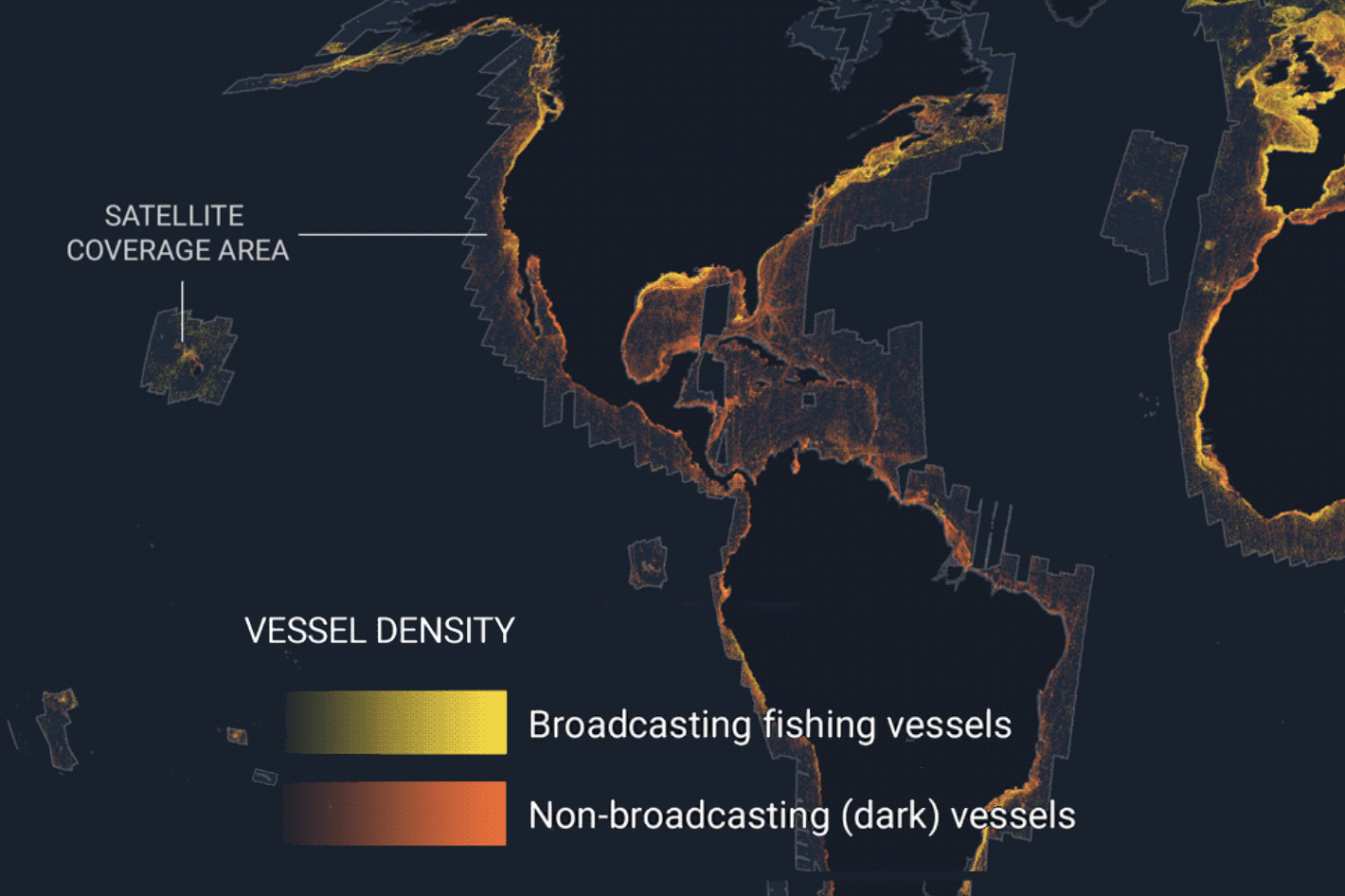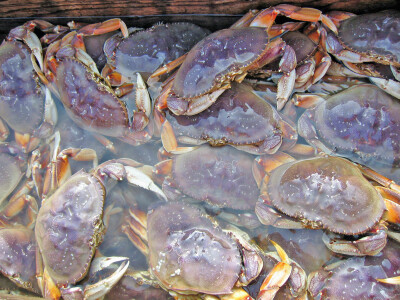Powered by satellite radar imagery and machine learning, the new interactive map layer from Global Fishing Watch reveals a global view of hidden vessels around the world.
Global Fishing Watch has developed and publicly released the first ever global map of previously undetected dark fleets, or vessels that do not broadcast their location or appear in public monitoring systems, showing how emerging technologies contribute to build a true global footprint of fishing activity.
Powered by satellite radar imagery and machine learning, the new map layer, which was made accessible in time for World Ocean Day on June 8, is updated daily within the main Global Fishing Watch map application. The Global Fishing Watch map is the first open-access online tool for visualization and analysis of vessel-based human activity at sea. Anyone with an internet connection can access the map to monitor global fishing activity from 2012 to the present for more than 65,000 commercial fishing vessels that are responsible for a significant part of global seafood catch.
Global Fishing Watch uses data that is broadcast using the automatic identification system (AIS) and collected via satellites and terrestrial receivers. They then combine this information with vessel monitoring system data provided by its partner countries and apply GFW’s own fishing detection algorithm to determine “apparent fishing effort” based on changes in vessel speed and direction. The heat map grid cell colors show how much fishing happened in that area, allowing for precise comparison.
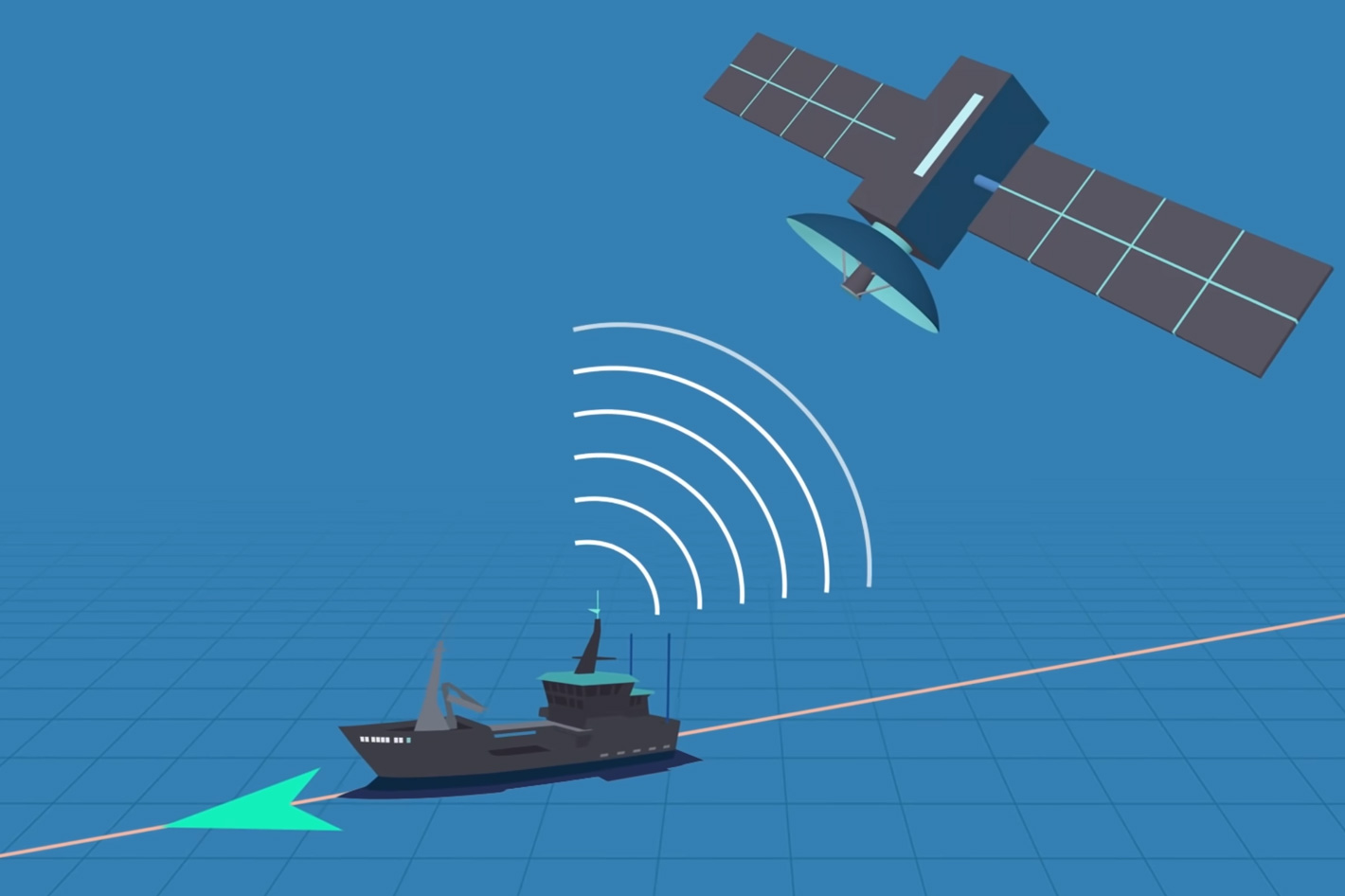 The map from Global Fishing Watch
The map from Global Fishing Watch
Users can view precise, high-resolution vessel tracks in the map and “events'' that occurred along each track. Events highlight where fishing took place, port visits, vessel encounters and loitering events—when a single vessel exhibits behavior indicative of an encounter with another vessel but no other transmissions were received. Events are grouped together when the map is zoomed out. Zoom in on a specific area for more detailed information.
It's possible to search for a vessel anywhere on the map by vessel name, maritime mobile service identity number, International Maritime Organization number, call sign or vessel monitoring system identifier. Advanced search allows you to filter and refine your search more effectively by source, flags and dates active. Click on any vessel in the search results to add that vessel track to the vessel tracks and events.
Reference layers facilitate a better understanding of vessel activity around exclusive economic zones, regional fisheries management organizations and other areas. Users can upload their own reference layers to support detailed analysis or spatial management.
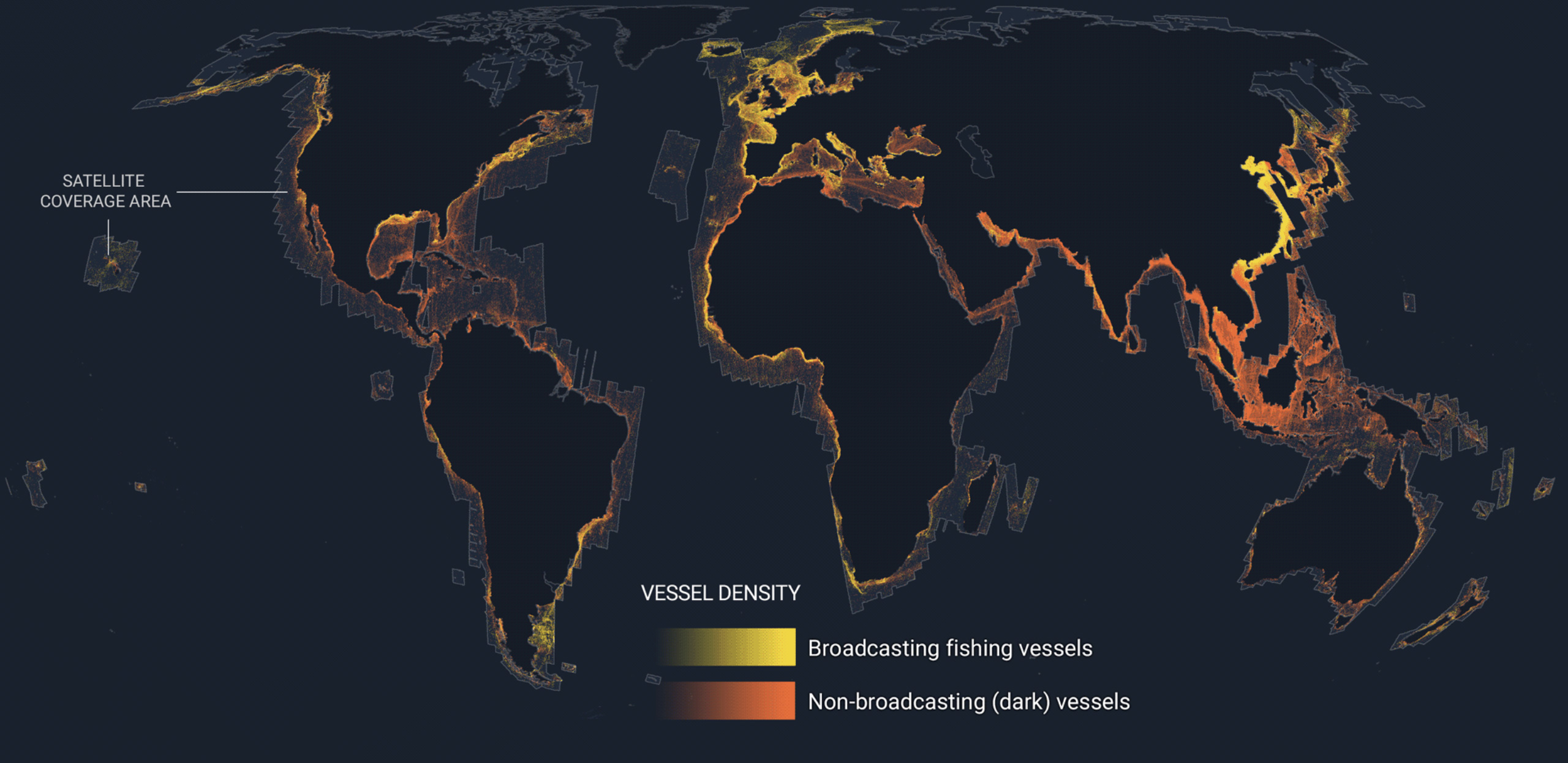 A global view of hidden vessels
A global view of hidden vessels
Now, visitors can explore a new layer, with a global view of hidden vessels around the world. This helps arm authorities, researchers and the public alike with the power to monitor vessel activity in all coastal waters, identify dark fleet patterns and build the necessary understanding to quantify threats to the ocean.
According to Global Fishing Watch, “the lack of information pertaining to how and where vessels are fishing has clouded our understanding of the true global footprint of fishing activity. This makes meaningful change difficult. To see these impacts, satellite radar technology, known as synthetic aperture radar (SAR), functions day and night in all types of weather and can generate imagery despite cloud cover or storm systems, resulting in detection capabilities that are significantly advanced over other satellite-mounted sensors.”
“It is surprising how little we have known to date about the true scale of human activity on the water,” said David Kroodsma, director of research and innovation at Global Fishing Watch. “If you combine vessels that intentionally shut off their signal with the significant number of boats that don’t make their whereabouts known in public systems at all, you end up with gaps in data, monitoring and accountability.
"We are using satellite radar imagery to reduce that information gap and put our findings at the fingertips of those who want to ensure our ocean is managed equitably and sustainably.”
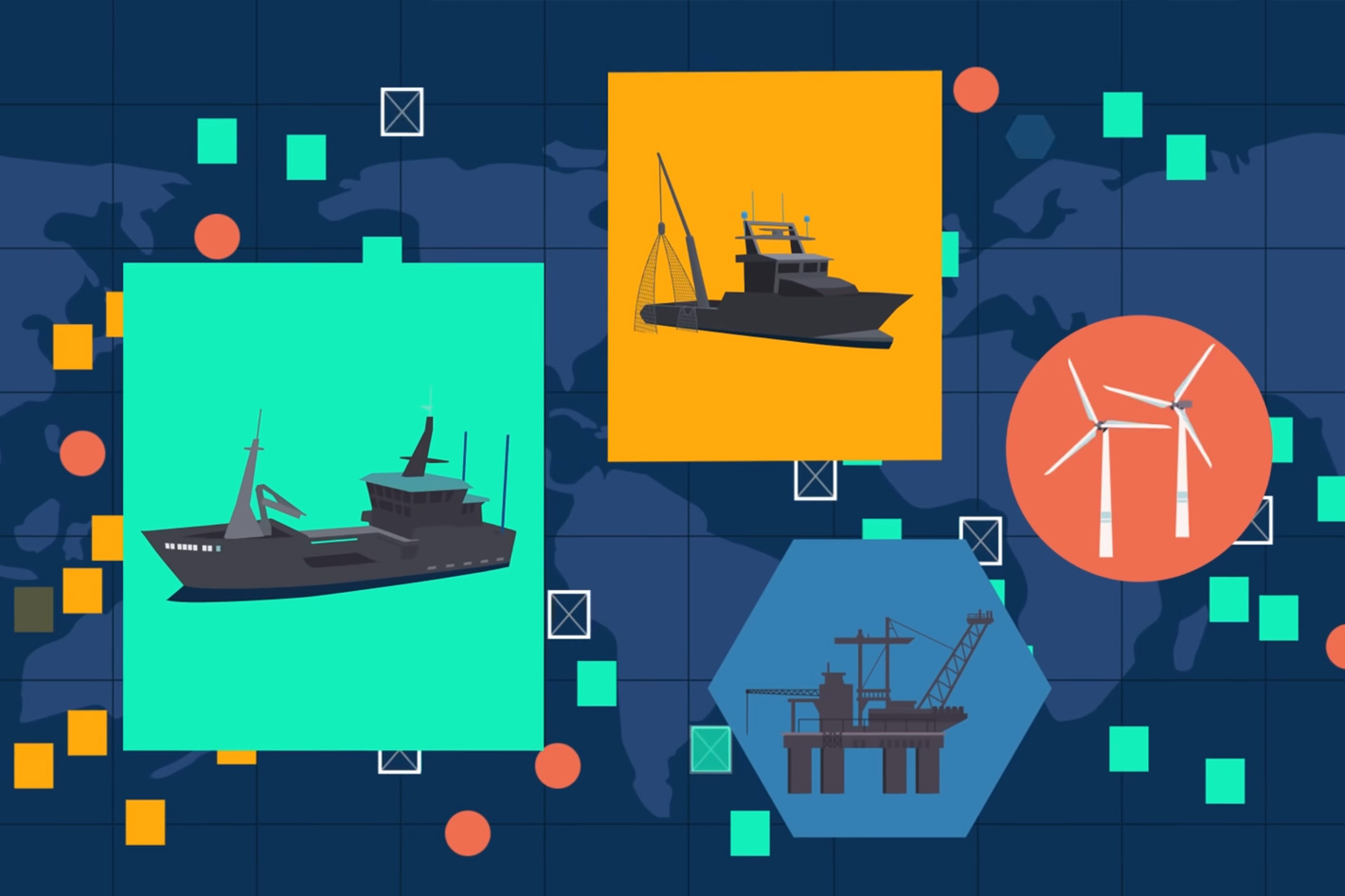 Information to help authorities
Information to help authorities
The new global map layer draws from a massive data-processing pipeline and uses machine learning to crunch petabytes, or millions of gigabytes, of radar imagery taken by the European Space Agency’s Sentinel-1 satellites.
By analyzing the entire archive of Sentinel-1 radar imagery, Global Fishing Watch has made 20 million detections of sea-going vessels greater than approximately 10 meters in length—and matched these detections to 100 billion GPS points from vessels broadcasting their position on the automatic identification system.
This matching differentiates vessels that broadcast their position from those that remain dark in public monitoring systems, resulting in more comprehensive views of vessel movements across the global ocean. This information can help authorities pinpoint areas with suspicious activity and identify vessel patterns that may indicate illegal activity or previously unquantified fishing pressures.
Global Fishing Watch used satellite radar and optical imagery to reveal around 900 vessels of Chinese origin fishing illegally in North Korean waters in violation of United Nations sanctions—the largest known case of illegal fishing by an industrial fleet operating in another nation’s waters.
Global Fishing Watch has since improved and expanded its use of satellite radar to study previously unseen fishing activity near marine protected areas in the Mediterranean Sea and hotspots of previously hidden activity in coastal waters around Africa. This emerging method of “seeing” vessels is revealing that the ocean is far busier than conventional monitoring systems show.
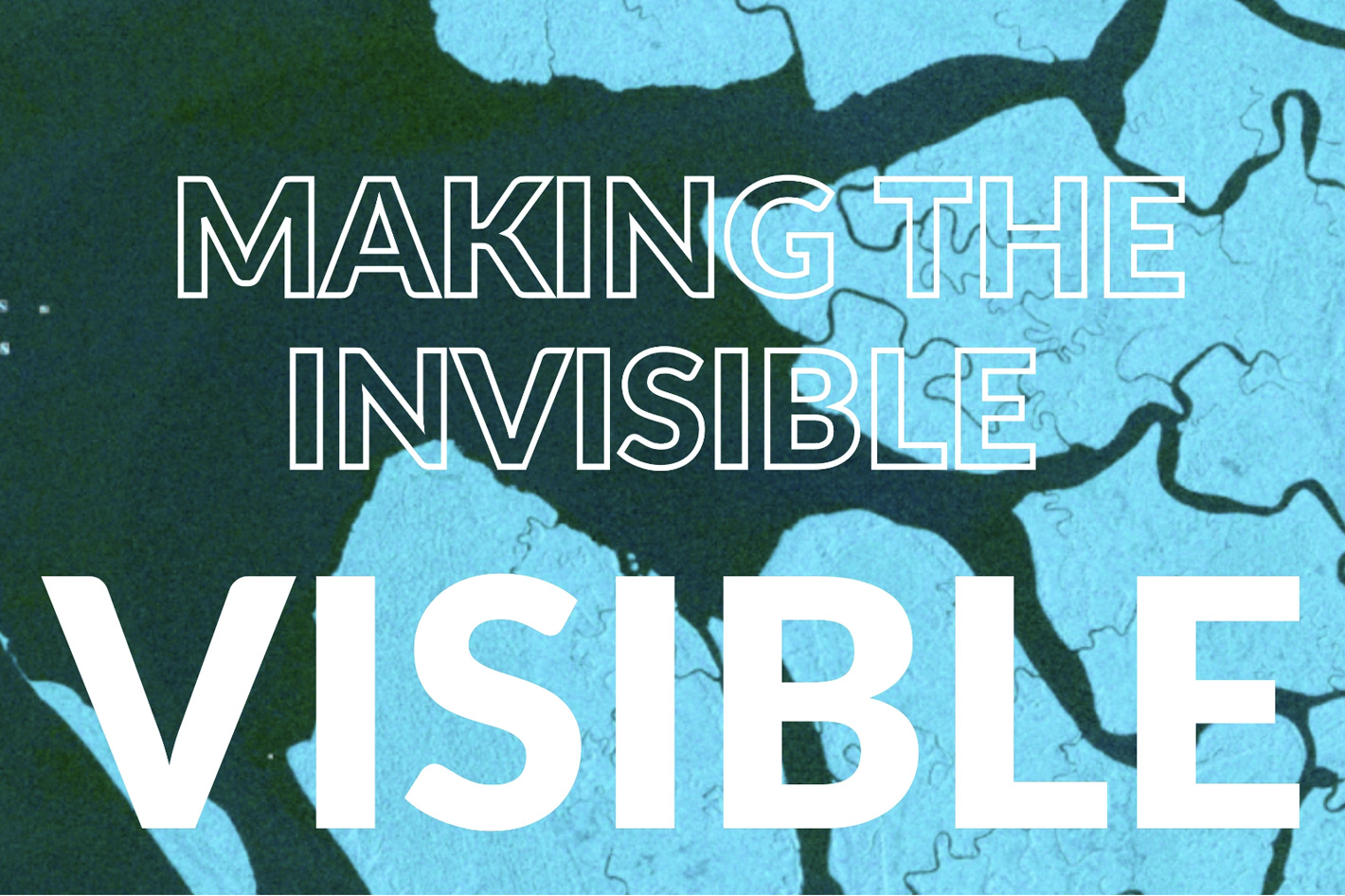 xView3 competition: making the invisible visible
xView3 competition: making the invisible visible
“While there are often legitimate reasons for not broadcasting a vessel’s location—not all governments require it—illegal operators will often turn off their signals to conceal their activity,” added Kroodsma. “The use of satellite radar to detect and map previously hidden and potentially illegal or harmful activity has opened a new realm of possibilities for remote sensing and big tech’s battle for the environment.”
Amplifying the potential of satellite radar technology, Global Fishing Watch partnered with the Defense Innovation Unit in July 2021 to host the xView3 competition. The challenge invited machine learning developers from all over the world to create and submit computer algorithms to help detect dark vessels, drawing 1,900 registrants from 67 countries. Global Fishing Watch is using the winning entries announced earlier this year to refine and advance dark vessel detection methods at global scale, and expects to be able to shed light on many human activities on the ocean in the near future.
“By seeing and characterizing the activity of these expansive dark fleets, we can begin to better understand and quantify not just illegal fishing but a great deal of human activity that is impacting our marine environment,” said Paul Woods, chief innovation officer at Global Fishing Watch. “These are exciting times when it comes to open, accessible data that anyone can use for free to understand and advocate for the fragile marine areas they care about most.”





